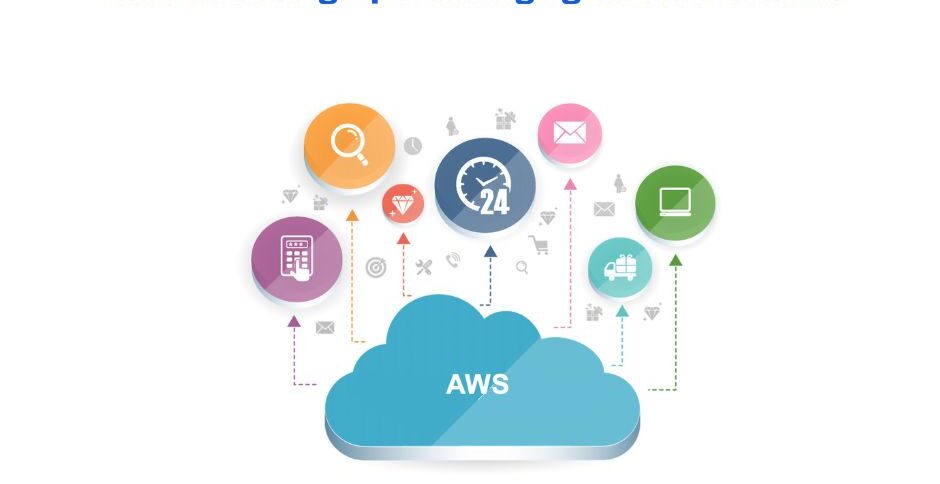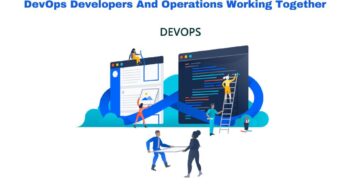AWS is one of the most popular cloud computing platforms on the market. It offers a variety of different services and components that can be used to create, manage, and deploy applications. In this section, we will outline the different components and services that AWS offers, as well as provide an overview of the account set up process and terminology. Afterwards, we will discuss guidelines for managing users and addresses in your AWS Account, as well as identify various tools available on AWS for monitoring, auditing, and troubleshooting activities. Finally, we will provide practical tips for setting up and managing an AWS Account in order to achieve cost efficiency. So read on to learn everything you need to know about Amazon Web Services!
It offers a variety of different services that can be used to create, manage, and deploy applications. These services include Amazon Elastic Compute Cloud (EC2), Amazon Simple Storage Service (S3), Amazon Elastic Block Store (EBS), Amazon Route 53 Service, Amazon SimpleDB Database, Amazon CloudWatch Logs,and more! In this section we’ll focus on setting up an AWS account specifically for learning about these various services.
The first step in creating your new AWS account is to navigate to the AWS website and enter your desired username or email address. Once you have registered with AWS, you will be prompted to create a password which you will use when accessing your account later on. After registering with AWS, you will be taken through a series of steps that are necessary in order to set up your new account properly.
Scaling Your Infrastructure With AWS Cloud Services
When it comes to infrastructure, scale is key. And with AWS, you can easily scale your environment up or down as needed without any added hassle. In this section, we’ll outline the benefits of running your infrastructure on AWS and provide a step-by-step guide on how to set up AWS Cloud Services. We’ll also discuss the various security features of the platform, as well as some of the advanced features that make AWS Cloud Services a powerful choice for businesses. The Kelly Technologies AWS Training in Hyderabad program would be an apt choice to excel in a career in cloud computing.
At the end of the post, we’ll provide cost information and customer success stories that demonstrate how AWS Cloud Services can be use to successful effect. Finally, we’ll cover performance advantages and automation capabilities of AWS Cloud Services that make it easy for you to manage your infrastructure in an efficient way. So whether you’re looking for a quick and easy way to scale up or down your environment, take a look at Amazon Web Services – it’s sure to be a valuable decision!
Choosing The Right Cloud Solutions With AWS
Are you looking to take your business to the next level? Do you want to be able to grow and scale your business quickly and easily? Then you need to look into AWS. AWS is a comprehensive cloud platform that offers a full range of services, from storage and backup solutions to web hosting and software development services. In this blog, we will walk you through the key features of various Amazon tools, provide tips and tricks for getting the most out of AWS, and discuss cost effective approaches for utilizing AWS.
First things first – let’s take a look at the full range of AWS services that are available. At its core, It offers three core services: compute (CPU, memory, storage), networking (Ethernet, IPAM), and database (RDS). However, Amazon also offers many additional tools through the AWS cloud suite. These additional tools include: Amazon S3 File Storage; Amazon Elastic Compute Cloud (EC2); Amazon Simple Queue Service (SQS); Amazon Simple Storage Service (ASSOCIATED_APPS); Amazon Route 53; Amazon CloudFront; Amazon CloudWatch; Elastic Load Balancing; DynamoDB; Kinesis Data Streams.
Now that we’ve seen all the available tools in the AWS cloud suite, it’s time to understand how they work together. The architecture of an AWS instance is design so that each tool can be use independently or together as part of larger applications or systems. In other words, you can use one tool without having to use another tool – this is called multi-tenancy. This architectural flexibility makes it easy for developers who are familiar with one technology stack to quickly adopt another technology stack in the AWS cloud without having to learn a new language or framework. For example, if you’re already familiar with MySQL databases then using RDS as your database service would be a breeze.
Making Sense Of AWS Machine Learning Solutions
Are you looking to take your business to the next level by using machine learning? If so, you’re in luck! It offers a wide range of solutions that can help you get start. In this section, we’ll provide an overview of AWS machine learning solutions and help you make sense of the different types of models that are available. We’ll also highlight some key considerations when selecting a machine learning solution and provide a cost estimate for implementing it on AWS. So don’t wait – start your journey to becoming a machine learning powerhouse today!
When it comes to machine learning, there are two main types of models – supervised and unsupervised. Supervised models learn from labeled data sets where each instance corresponds to a particular class or category. Unsupervised models, on the other hand, don’t have any labeled data sets but are use to learn patterns from data sets without labels.
It offers four different types of machine learning services – Amazon SageMaker, Amazon Elastic MapReduce (EMR), Amazon Athena, and Amazon Simple Storage Service (S3). Each service has its own strengths and weaknesses, so it’s important to understand which one is right for your specific needs before making a decision.
For example, EMR is great for executing large-scale batch jobs while Athena is better suite for interactive queries and analysis tasks such as text or search engine analysis. Additionally, each service comes with its own set of features and capabilities that can be useful in specific scenarios. For example, S3 provides fast storage options for large data sets while Elastic MapReduce can be use for big data tasks such as clustering or predictive modeling.
In Conclusion
This article in the blogsstyle must have given you a clear idea about Amazon Web Services is a powerful platform for businesses of all sizes. It provides scalability, reliability, and cost savings, making it an attractive option for those looking to leverage cloud services. With the ability to deploy applications quickly and securely on the AWS platform, businesses can take advantage of elasticity and cost savings while mitigating risks. Additionally, It offers many features such as storage options, security measures, and integrations with other popular technologies, making it a great choice for businesses looking to move to the cloud.







